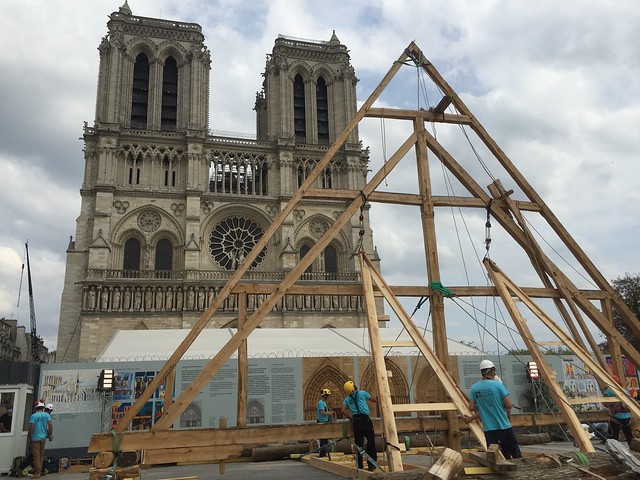Carpenters without Borders
Since its establishment in 1992 in Paris, Carpenters without Borders (“Charpentiers sans Frontières”) have fostered a movement of wood carpentry professionals who volunteer their expertise on an international scale. Working with green wood using hand tools and ancestral techniques, these dedicated volunteers gather for annual or biannual one-week projects in locations across the globe. Over three decades, Carpenters without Borders have garnered a reputable standing, attracting a steady influx of dedicated members and newcomers.
The Carpenters Without Borders movement arose from research conducted by François Calame, an Anthropologist of Techniques, in 1981. At that time in France, all the techniques in carpentry were entirely related to the use of machines, including all carpentry in restoration, as this sector was also guided by industrial regulations. Through encounters with the few remaining craftspeople proficient in the art of working green wood with an axe, Calame‘s investigations laid the foundation for the movement.
The first project in 1992 brought carpenters from across Europe together with Romanian artisans who practised the hand construction of houses using freshly felled trees in Moldavia-Bukovina. Subsequently, the movement expanded, organising periodic meetings that facilitated the exchange and sharing of international and intergenerational knowledge.
Over the course of 30 years, 15 meetings were convened, gathering participants from 25 different nationalities. The techniques honed and taught through these initiatives have significantly influenced restoration practices, particularly in France.
Notably, a groundbreaking project in 2020 showcased the ability to reconstruct the frame of the fire-ravaged Notre-Dame de Paris Cathedral using original materials and techniques reminiscent of the 13th century. 25 volunteers painstakingly reconstructed a truss from donated oak wood in just one week, which was publicly exhibited in front of the cathedral in September 2020 during the European Heritage Days. This played a crucial role in determining the authorities’ decision on how to reconstruct the cathedral’s roof. Truss No. 7, reconstructed by Carpenters Without Borders, was subsequently designated as the contractual reference point for the current restoration of the cathedral, which commenced on 1 December 2022.
“This grassroots movement is driven by passion but is also built upon a solid philosophy and thorough research. Originating from a community of interest, Carpenters Without Borders have achieved high-quality results due to the leadership of a dedicated researcher, which also ensures excellence in their endeavours. The movement’s focus on collecting and disseminating ancient techniques gathered from carpenters across Europe contributes to the transmission of craft skills and promotes the exchange of methodologies beyond local networks. The concept of preserving traditional skills by connecting craft practitioners with the management of natural heritage resources (woodlands) has proven to be a sound approach. Indeed, the value of Carpenters Without Borders lies in their commitment to working with locally sourced timber and adopting a holistic perspective. Their success in impacting policy change with respect to the restoration of Notre Dame through a live demonstration is particularly notable and greatly appreciated”, the Awards’ Jury said.
More information
Contact: François Calame | contact@charpentiers-sans-frontieres.com | www.charpentiers-sans-frontieres.com



